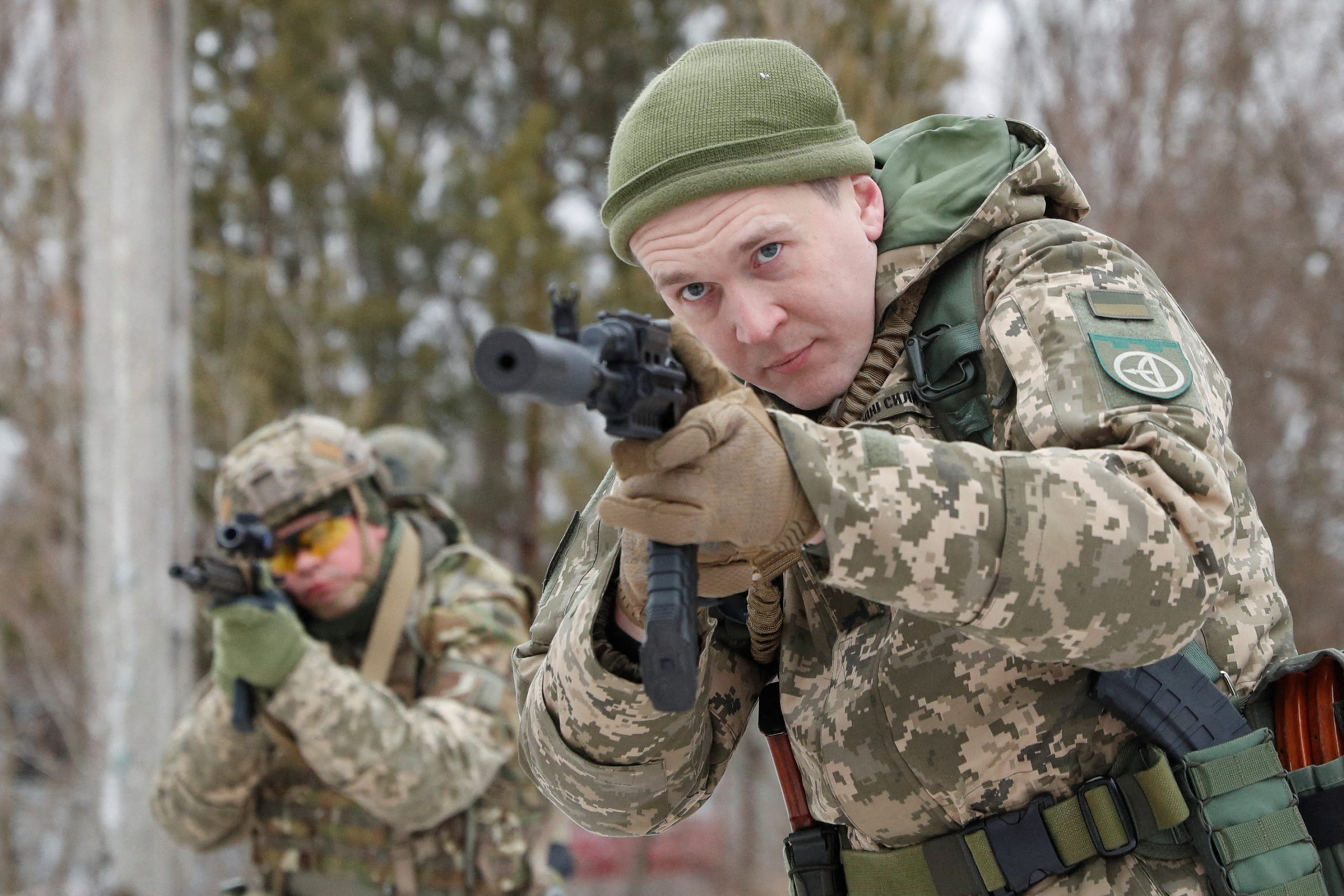Timeline: Russia’s stand-off with Ukraine

Reservists of the Ukrainian Territorial Defence Forces take part in military exercises on the outskirts of Kyiv, Ukraine January 29, 2022. | PHOTO: REUTERS/Valentyn Ogirenko
PARIS — From Russia’s massing of troops along the border in November to Vladimir Putin on Monday recognizing the independence of two separatist regions in eastern Ukraine and ordering Russian troops into the areas, here is a timeline of months of tensions around Ukraine.
Troop movements
On November 10, Washington reports unusual Russian troop movements near the Ukrainian border.
On November 28, Ukraine says Russia is massing nearly 92,000 troops for an offensive at the end of January or early February.
Moscow denies this and three days later accuses Kyiv of a military build-up of its own, demanding “legal guarantees” that it will never join Nato.
Moscow demands
On December 7, US President Joe Biden threatens Russian counterpart Vladimir Putin with “strong economic and other measures” if he invades Ukraine.
Ten days later Moscow puts forward proposals to limit US and NATO influence on former Soviet states.
Build-up in Belarus
On January 17, Russian troops begin arriving in ex-Soviet Belarus for military drills, which Moscow says are aimed at “thwarting external aggression”.
Two days later, Washington announces an extra $200 million in security aid to Kyiv.
Nato on standby
On January 24, Nato puts troops on standby and sends ships and fighter jets to bolster Europe’s eastern defenses.
The next day Moscow begins military exercises involving some 6,000 troops and at least 60 fighter jets in southern Russia near Ukraine and in Moscow-annexed Crimea.
On January 26, Washington refuses to shut the Nato door on Ukraine and the alliance says many of Moscow’s security demands are “unrealistic”.
China warns US
The United States says it believes Putin “is going to use military force between now and the middle of February”.
The next day China warns that Russia’s security concerns should be “taken seriously”.
On January 28, Putin says the West has ignored “Russia’s fundamental concerns” on Nato’s expansion and has “strike weapons systems near Russia’s borders”.
UN showdown
On January 31, Moscow accuses the United States of whipping up “hysteria” after Washington says 30,000 Russian troops will be deployed in Belarus near the Ukrainian border by early February.
110,000 troops
On February 2, the United States sends 3,000 troops to fortify Nato forces in eastern Europe.
Five days later the US says Russia now has 110,000 troops on Ukraine’s border with another 40,000 to arrive within a week.
Russia and Belarus begin 10 days of military maneuvers on February 10.
Retreat or reinforcement?
On February 15, Moscow says some of its forces are returning to their bases. But Nato sees no sign of a withdrawal and Washington claims Russia is in fact sending reinforcements.
Artillery fire
On February 17, shellfire intensifies all along the frontline of the two Russian-backed enclaves in eastern Ukraine.
On Friday the leaders of the Donetsk and Lugansk separatist regions say they are evacuating residents to Russia.
US Secretary of State Antony Blinken accuses Moscow of “false provocations” to justify further “aggression” against Ukraine.
Attack imminent?
On February 19, Ukraine says two of its soldiers died in attacks on the frontline with Russian-backed separatists.
Ukrainian President Volodymyr Zelensky proposes a meeting with Putin, as Moscow test-fires nuclear-capable missiles.
Russia is “on the brink” of invading Ukraine, Washington says.
Putin-Biden summit?
France and Germany call on their nationals to leave Ukraine.
On February 20, Belarus says joint exercises involving Russia and Belarus forces are being extended.
On Monday France says that Putin and Biden have agreed in principle to a summit.
But the White House is notably cautious and the Kremlin says it is too early to discuss organizing a summit.
The Russian military says it has killed five “saboteurs” who crossed into Russia from Ukraine. Ukraine firmly denies the claims.
Putin recognizes separatist republics
On February 21 Putin recognizes the independence of two separatist regions in eastern Ukraine and orders Russian troops into both areas on a “peacekeeping” mission.
Western leaders swiftly condemn the move, with the US and the European Union preparing related sanctions.
France calls for an emergency meeting of the UN Security Council.
Two Ukrainian soldiers are killed in a shelling attack on a frontline village.